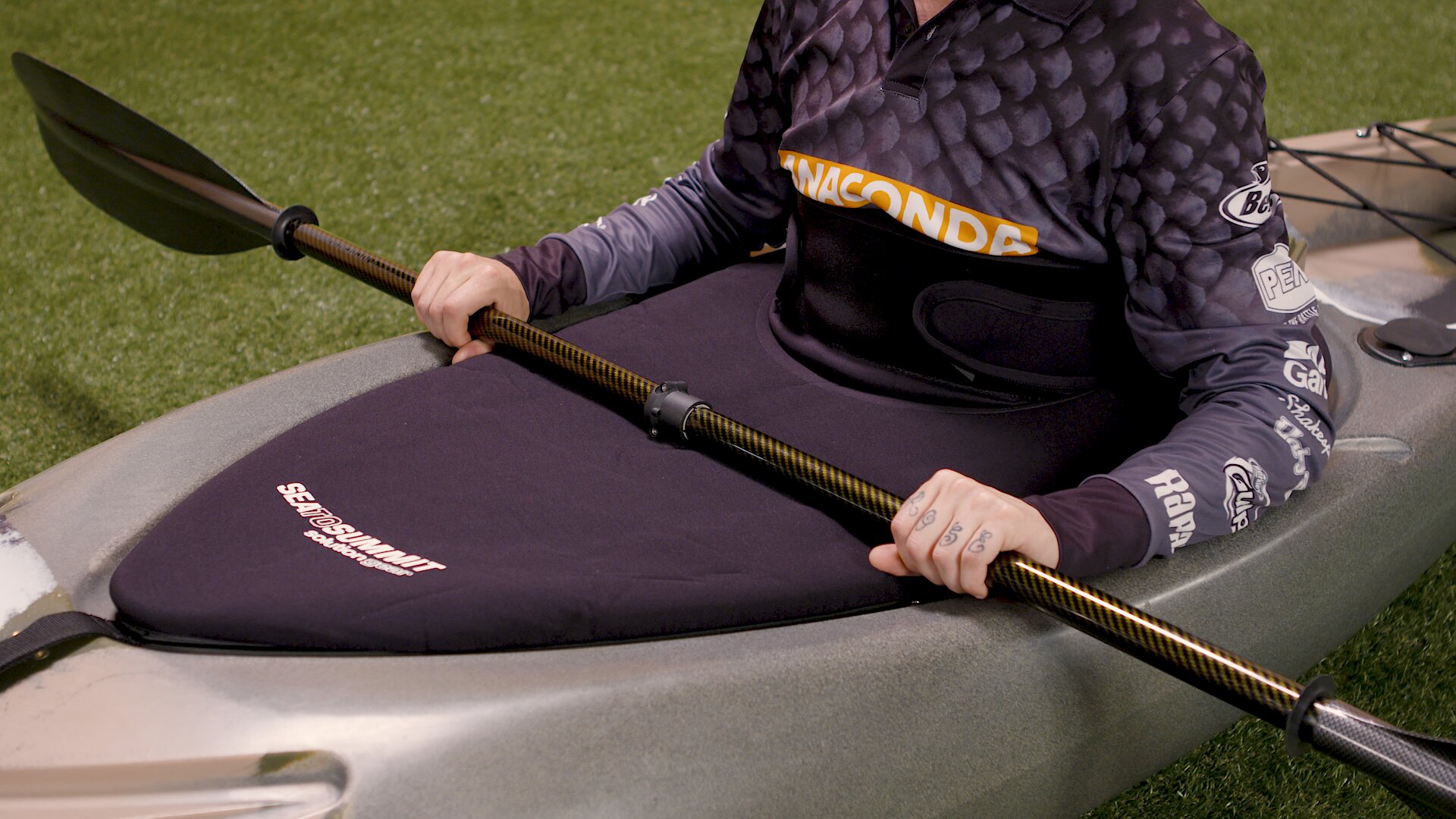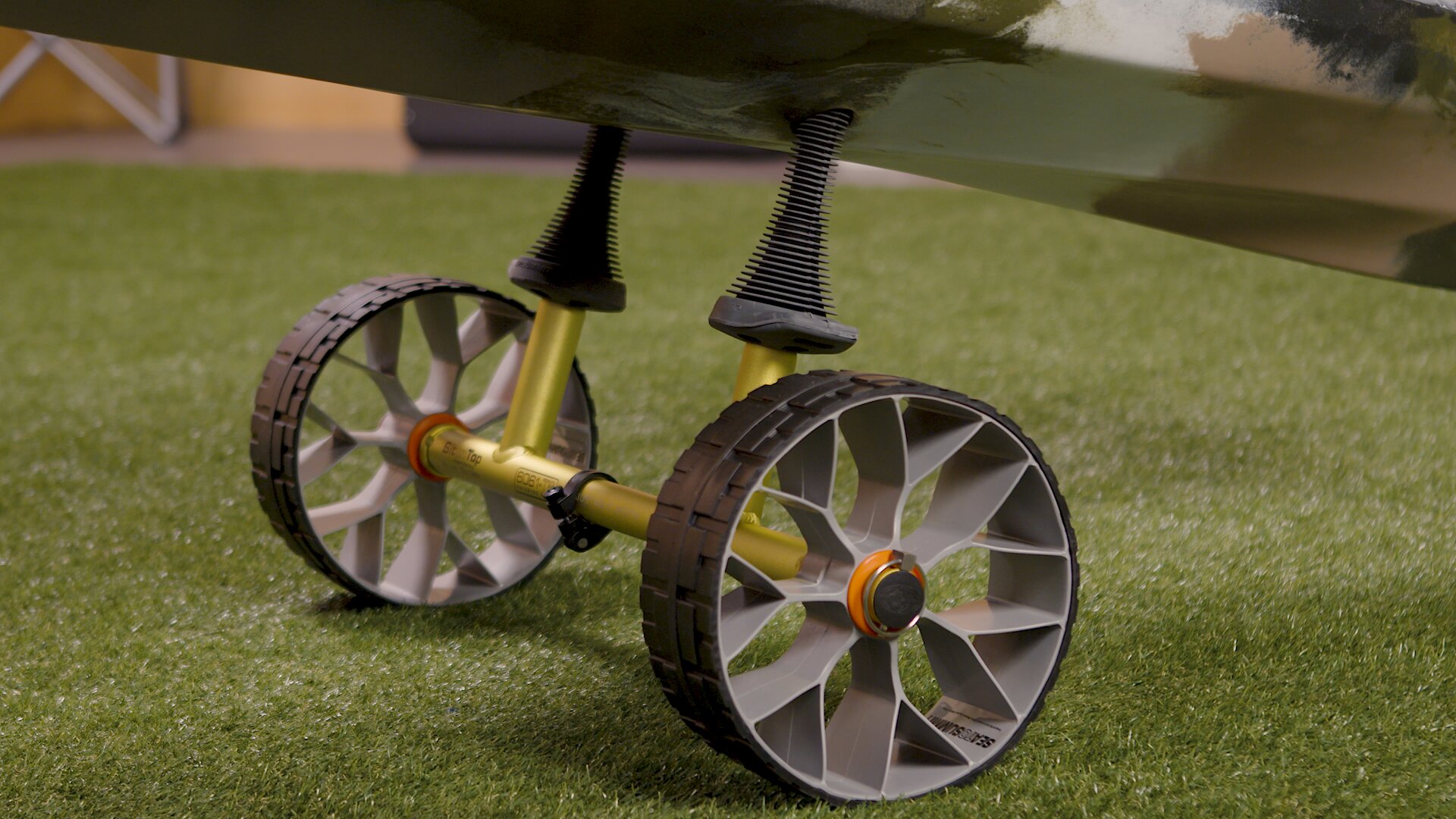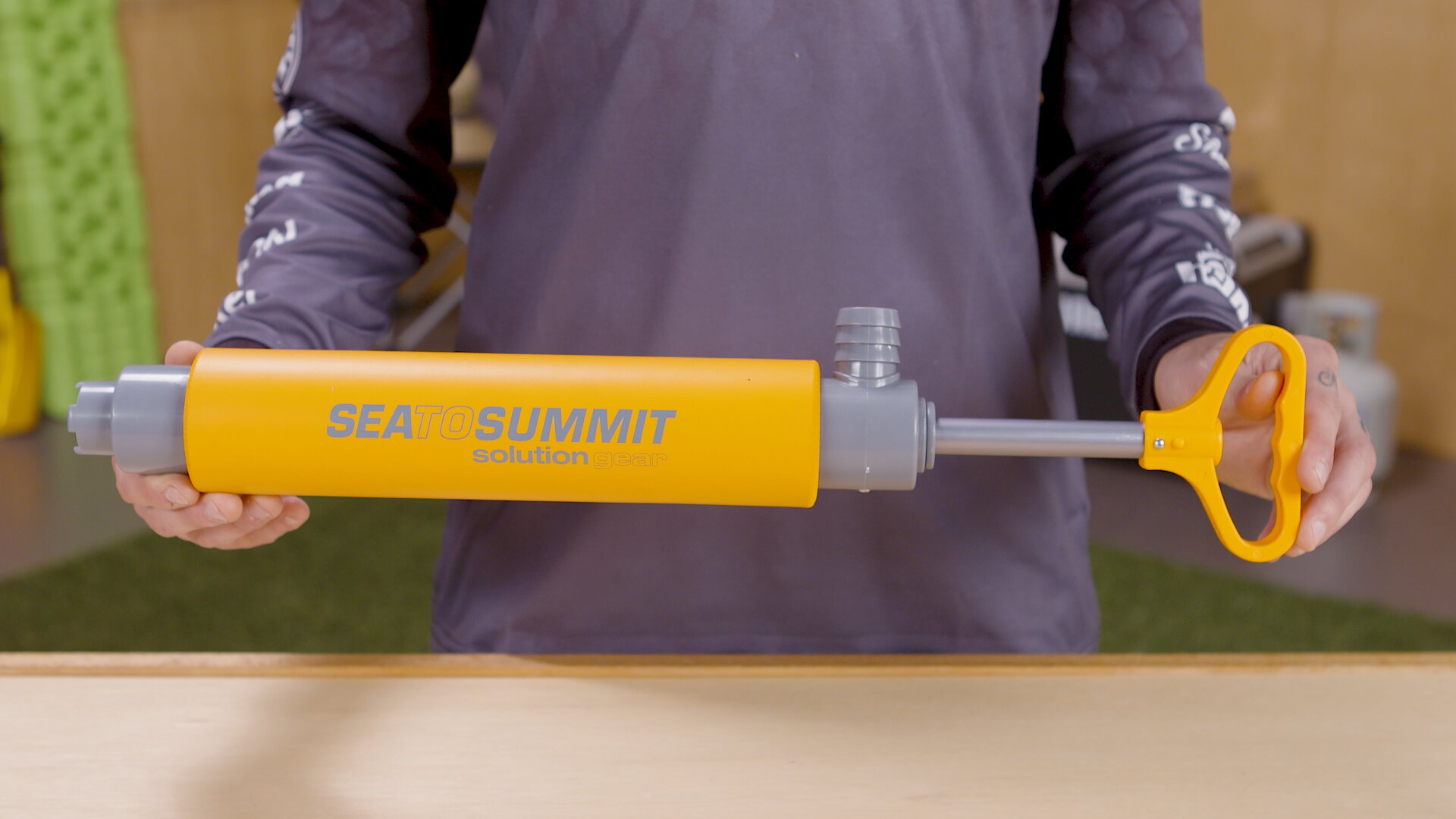| Your browser is not supported. | ||
|
Please browse our site using any of the following options:
| ||
How to choose kayak gear for comfort & convenience?
Kayaking is a great way to get away from it all and back to nature. It's fun, relaxing and helps keep you fit while exploring the wonders of beautiful ocean, river and lake views. When you first start kayaking you'll probably only want a kayak and a paddle, plus essential safety gear, food and water. There are a few other accessories you may want, straight away or once you've got the hang of kayaking, to make going for a paddle more comfortable and enjoyable.
What are the best accessories for kayaking?
Everyone's different, so what's best for one person might not be best for the next. The kayaking gear that's best for you depends on:
- Who'll be using the kayak (kids or adults? How tall and experienced are they?)
- What time of year you'll be going kayaking (in warm summer weather or cold winter days?)
- How long you'll be kayaking for at a time (just an hour or two, or on all-day expeditions?)
- Whether you're kayaking for fitness or fun (will you need all the gear or just the basics?)
- Whether you want to stop to swim, fish or snorkel (and need to anchor your kayak)
- Whether your kayak has built-in wheels (or you need a trolley to get it to and from the water)
- What kind of kayak you have (do you already have roof racks and will it fit on them?)
- How much storage space you have at home (wall mount your kayak if space is limited)
- How often you'll be using the kayak and for how long (rarely or every weekend for years?)
- How long you want it to last (for a few summer days or years of paddling on the water?)
Which kayaking accessories should you buy?
Working out which accessories to buy is easier when you break it down into these five steps:

1. Which Paddle?
What's the best paddle for kayaking?
The paddle you choose will determine:
- How easily you move through the water.
- How much power and speed you can create.
- How comfortable your paddling will be.
- How long you can happily kayak for at a time.
- How much you'll enjoy your kayaking adventures.
What size kayak paddle should I use?
When it comes to choosing the right paddle size, the key factors are:
- Your height - if you're short you'll need a shorter paddle - a taller paddle if you're tall.
- Kayak width - the wider your kayak is, the longer your paddle needs to be.
- Matching the length of the paddle (the shaft ) with your level of experience:
- Beginners - paddle close to the water at a leisurely pace so need a longer shaft .
- Experienced - paddle high in the air for power and speed so need a short shaft .
- An adjustable paddle can be lengthened/shortened for taking turns on the kayak.
- What the paddle's made out of:
- Aluminium and plastic - a bit more flex than expensive paddles so easier to move through the water, but a bit heavier - good for occasional and short paddles.
- Fiberglass and nylon - better materials so a lighter paddle for long paddles.
- Carbon composite - super light and strong for racing, all-day and multi-day trips.
- Choosing a paddle weight according to how you'll use it (and your budget):
- The heaviest paddles are still quite light so fine for having fun (and the cheapest).
- Light paddles are easier to move through water for longer (but more expensive).
- Super light paddles are generally used for racing (and are the most expensive).
- How comfortable the paddle is to hold and paddle with (the grip, weight and length).
- To get a feel for the best size paddle for you, try a few at your nearest Anaconda store.
Why are kayak paddles offset?
When you look at the two blades on either end of a kayak paddle, you'll notice they're attached to the shaft on slightly different angles. This ensures that, when you're paddling, the blade in the air doesn't create too much wind resistance (so it doesn't counteract the momentum you're generating as you move the other blade through the water, which would slow you down ).

2. More Comfort
There are lots of ways you can make kayaking more comfortable to maximise your enjoyment.
How to make kayaking more comfortable
Adding a seat pad or backrest to your kayak:
- Puts padding between you and the hard kayak.
- Keeps your back supported while you kayak.
- Makes kayaking more comfortable and enjoyable.
The level of comfort you'll experience is a consequence of:
- Padding - more seat padding means more comfort (built-in foam creates cushioning).
- Material - a soft backrest will be more comfortable than a hard backrest, and more breathable so you'll feel less sweaty in Australia's hot summer weather.
- Back support - for your lumbar spine, which adds comfort and reduces fatigue. Some kayaks come with a built-in plastic mould, or you can buy a backrest separately.
- Shape - whether the support is contoured to both the upper and lower part of the seat .
- Storage - some backrests have built-in storage pockets and fishing rod holders so everything you need while kayaking can be kept within easy reach.
Try a few different seat pads and backrests in store before you buy, and while one size fits most kayaks, but it pays to check the dimensions of the seat and your kayak first.
How to install a sit on top kayak seat?
If you're thinking about buying a backrest, you may be wondering how it attaches to the kayak. It's simple. All you need to do is:
- Fully loosen the two straps at the back (top and bottom), and the two side straps.
- Hold the backrest right at the back of the seat area.
- Clip both back straps to the kayak's attachment points (or criss-crossed cord at the back).
- Clip the two side straps to the kayak's attachment points in front of the seat.
- Use your hand to push the bottom of the backrest right up against the kayak's seat back.
- Hold the backrest in this position with one hand while you tighten both back straps (at the top and bottom) until the backrest is vertical or slightly forward (not leaning back).
- Sit in the kayak with your knees slightly bent, and then pull the side straps until tight.
- That's it - you're all set up and ready to kayak!
What are some kayak fishing accessories you need?
If you want to fish from your kayak in the ocean or river, you'll need:
- An anchor kit - anchors you in one place so you don't drift away from a good fishing spot.
- A backrest - supports your back while you fish for hours - go for one with rod holders.
- Paddle holder - you attach your paddle to the holder while you fish so you don't lose it.
How to stay dry while kayaking?
You can keep water out of your kayak by using a:
- Scupper plug - stops water getting in through the scupper hole in turbulent water or with heavy equipment.
- Bilge pump - to empty water from your kayak quickly if you've taken on too much water.
- Cockpit cover - fits snugly around your waist and the edges of a sit-in kayak cockpit so your bottom half stays dry and warm.
The clothes you wear can also keep you dry while you kayak so you don't feel wet and cold. Anaconda has watersport shorts and tops, and gloves to protect your hands from blisters.

3. Storage & Safety
When it comes to water sports, safety is always a priority, and the right storage solutions can help you minimise hassle so going kayaking is always fun.
How to stay safe?
To make sure you're safe, you may want a:
- Paddle holder - to attach to your paddle so it don't lose it and find yourself stranded.
- Paddle float - so it's easier to get back in your kayak in deep water when you're alone.
- Leash - that connects your kayak to your ankle so it doesn't float away if you fall off.
- Life jacket - that's shorter for kayaking so it won't get in the way while you're paddling.
- Deck SOS light - so you can attract attention and get help if there's ever an emergency.
What's the best way to store kayaking equipment?
When you're out on the water:
- Waterproof bags keep all your supplies dry and valuables safe.
- Handy holders give you easy access to frequently used essentials.
- Stick-on lash points allow you to make connections to your kayak.
Waterproof bags
You'll get a bit wet when you kayak, but if you use dry bags your gear, food and supplies won't.
Rather than going for one big dry bag, get a few different bag:
- Sizes and spread the gear between them (so the weight's balanced across your kayak).
- Colours so you can group gear by colour and it's easier to find what you want fast.
The material the dry bag is made from will determine how long it will last:
- Vinyl - this is the most basic kind of dry bag - usually used to make smaller, cheaper bags.
- Nylon - tougher and more durable than vinyl - usually used to make larger bags. Some have a silicon coating for enhanced waterproofing and to help prevent tears.
- Fabric thickness (denier) is shown with a D number - a higher number is a tougher bag.
Handy holders
You can use handy clip-on and screw-on holders to keep everything within reach:
- Clear waterproof sleeves so you can check your maps or charts.
- Your compass so you can navigate and paddle in the right direction.
- A phone or camera holder - make sure it's in a waterproof case!
- Drink holders so you can reach out, take a sip and stay hydrated.
- Fishing rod holders so you don't have to hold the rod the whole time.
- A paddle holder so your paddle's safe while you fish, snorkel or swim.
Where do you mount a kayak paddle holder?
When attaching your paddle holder, make sure you position it:
- On the side of your kayak, above or below the handle line (so you can still use them).
- Slightly in front of you, near where your knees bend so you can reach the paddle easily.
Stick-on connections
You can get lash points that stick onto your kayak so you can:
- Attach bags to your kayak so you won't lose anything if your bags go overboard.
- Attach your kayak to other kayaks and boats if you're doing day visits or boating trips.
Home storage
When you're storing your kayak at home you may want:
- A wall mount you can put your kayak up on the wall if your floor space is limited.
- An adjustable mount can be used for other board sizes too.
- Look for one with soft padding so it won't scratch the kayak.
- A cockpit cover for the seat so you can keep dirt and animals out (also great for camping).

4. Trolleys & Roof Racks
How do you get a kayak to and from the water?
Kayaks are big and heavy, but getting them to and from the water doesn't have to be hard.
Unless you live right on the water, you'll need:
- A kayak trolley/cart - to put your kayak on and wheel it down to the water yourself.
- Roof racks - so you can strap your kayak to the roof of your car and drive to the water.
How to carry a sit on top kayak yourself
Just put your kayak on a kayak trolley or cart then wheel it down to the water on your own. It takes the strain out of transporting your kayak to and from your favourite launching spots.
Cart or trolley
If your kayak doesn't have built-in wheels :
- Carrying it from the house, car or campsite can be heavy going, even with help.
- A kayak cart or trolley makes getting it to the water and back again so much easier.
What are the different types of kayak trolleys available online?
When weighing up which one's the best kayak trolley, first choose from two different types:
- Sit-in carts - are easier to roll with bigger wheels, and wider tyres are best on sand.
- Sit-on-top kayak carts are designed to handle bulky sit-on-top kayaks.
How do you use a kayak trolley?
If you're using a:
- Sit-in kayak cart - sit the kayak in the centre-hull cradle that sits between the two wheels .
- Sit-on-top kayak cart - insert the kayak scupper holes into the vertical cart prongs (adjust the prong width to suit your kayak size if needed).
How do you safely load a kayak trolley?
How to strap a kayak to a trolley
You only need to use a strap for a sit-in trolley. Simply:
- Feed both ends of the strap through one side of the trolley (between the seat and back of the kayak)
- Pull the straps up and over the top of the kayak (the kayak width not length).
- Feed both ends of the strap through the other side of the trolley and tighten the strap.
How to tie a kayak to a roof rack
Kayaks are longer than cars, so to transport your kayak you'll need:
- Roof racks to secure your kayak on top of the car and protect them both from damage.
- Hard racks - padding and a lock mechanism cover are best to prevent scratches.
- Soft racks - are a quick and easy way to get your kayak on and off the roof.
- Wide racks - disperse the load more evenly across the roof.
- UV and water-resistant racks - are best for handling the weather so last longer.
- A rack with a grippy base is best because the kayak moves less and is more secure.
- Look at how easy they are to use and try using a few different racks in store.
- Tie downs to tie the kayak to the roof racks for safe driving to and from the sea or river.

5. Accessory Quality
When it comes to how much you should spend kayaking gear:
- If you just want the kids to try kayaking and have fun, a cheap paddle should do.
- Cheaper gear generally doesn't last as long as the best gear that costs more, so you get what you pay for.
- If you want to kayak in comfort for years to come, it's worth spending a bit more on good-quality gear.
If you're not sure which kayak accessories to buy, it might be a good idea to go on a few short paddles just with essential safety gear, food and water first. Then you'll have a better idea of the additional gear that will make your kayaking more comfortable and enjoyable.
How much are kayak paddles and accessories?
Anaconda has:
- Kayak paddles from $20 to $175.
- Kayak backrests from $30 to $130.
- Kayak trolleys from $79 to $160.
- Kayak roof racks from $49 to $490.
- So many other kayak accessories for under $100.
When you go to the Water Sports section on the Anaconda website, you can select Paddles, Storage Transport or Water Accessories. Then use the tick box filters down the left hand side of the page to make working out which gear to buy easier and faster because you can choose to filter what you see by:
- Price - so you only see gear that's within your budget on the page
- Deal - so you only see all gear that's on sale or at clearance prices
- Categories - so only see the type of gear you're interested in (e.g. paddles or roof racks)
- Size - so you can see paddles in the size you need.
- Brand - so you can find specific brands of kayaking gear.
Other Beach & Surf Essentials
Check out Anaconda's range of Beach & Surf products available online or visit your local store.